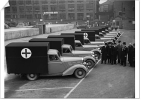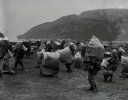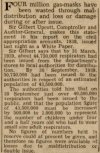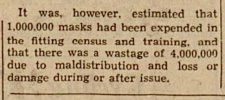-
Welcome to this forum . We are a worldwide group with a common interest in Birmingham and its history. While here, please follow a few simple rules. We ask that you respect other members, thank those who have helped you and please keep your contributions on-topic with the thread.
We do hope you enjoy your visit. BHF Admin Team -
HI folks the server that hosts the site completely died including the Hdd's and backups.
Luckily i create an offsite backup once a week! this has now been restored so we have lost a few days posts.
im still fixing things at the moment so bear with me and im still working on all images 90% are fine the others im working on now
we are now using a backup solution
You are using an out of date browser. It may not display this or other websites correctly.
You should upgrade or use an alternative browser.
You should upgrade or use an alternative browser.
Gas attacks and gas masks in WW2
- Thread starter Vivienne14
- Start date
Bob Davis
Bob Davis
At that time there were still living reminders of the horrors of a gas attack in people like my grandfather who was a victim of a mustard gas attack whilst with the Warwicks in WWI and as we were probably experimenting with it and similar silent killers, it was high on the list of what to be aware of and of course we all had our gas masks. Somewhere in all my rubbish or collectibles as I call them I still have one along with a ration book and apparently according to an expert who saw it, it contains asbestos.This snippet mentions various types of public shelter including ‘Stent’ of ready cast concrete and steel lined trenches. Interesting that a decontamination facility was being built, so there must have been concerns about gas attacks well before war started. Viv.
View attachment 159578
Source: British Newspaper Archive
Bob
There must have been worries vVv. Everyone, was issued gas masks, and with good reason see below:

 www.history.com
https://www.tandfonline.com/doi/abs/10.1080/07430178608405237?journalCode=cdan19 (only first page shown)
www.history.com
https://www.tandfonline.com/doi/abs/10.1080/07430178608405237?journalCode=cdan19 (only first page shown)
Curiously it seems that the only people affected by mustard gas in WW2 were Americans who were poisoned by their own gas when the Germans bombed a ship carrying mustard gas shells
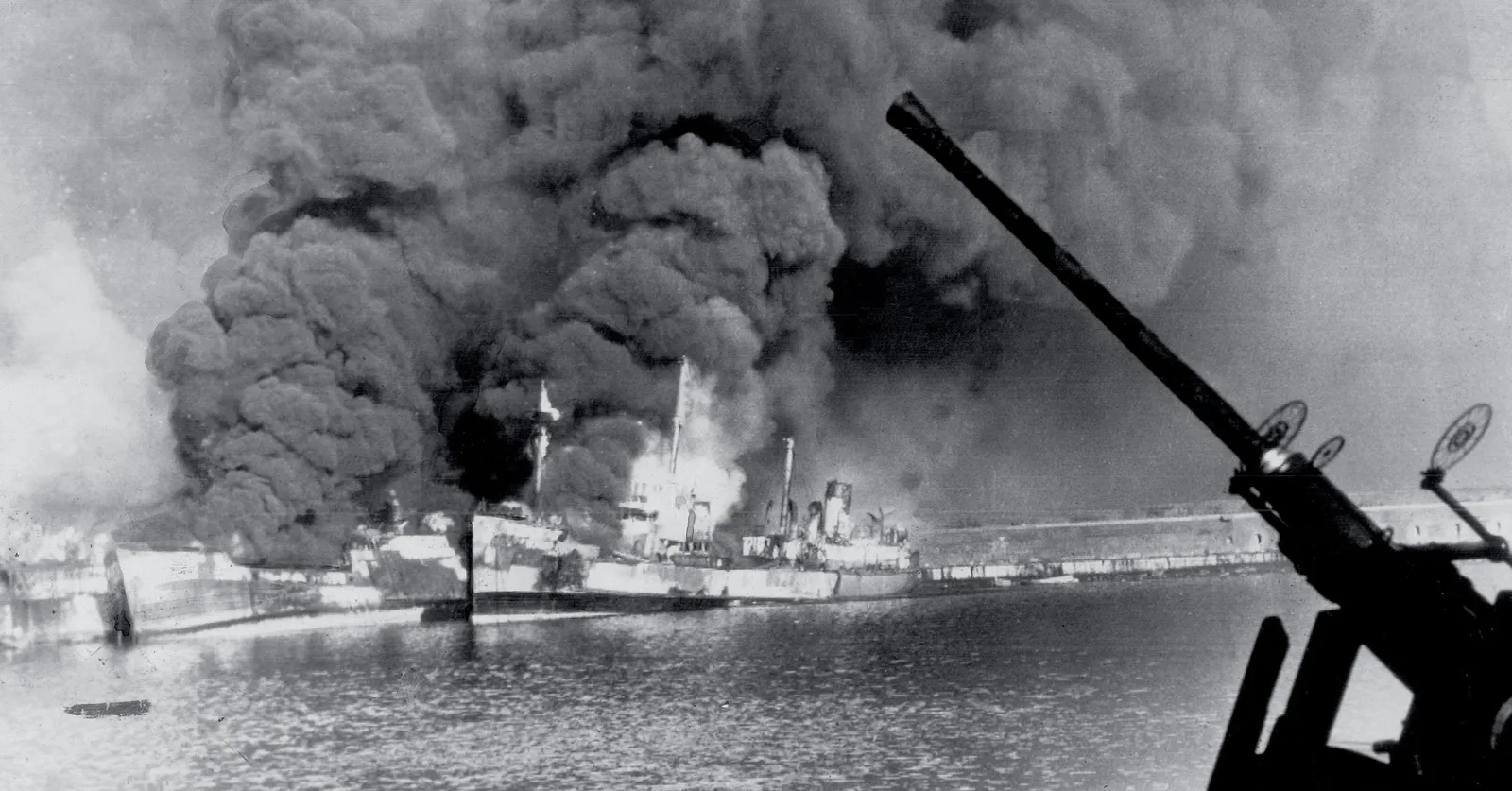
 www.smithsonianmag.com
www.smithsonianmag.com

The Nazis Developed Sarin Gas During WWII, But Hitler Was Afraid to Use It | HISTORY
Even as his Nazi regime was exterminating millions in the gas chambers, Adolf Hitler resisted calls to use the deadly nerve agent against his military adversaries.
Curiously it seems that the only people affected by mustard gas in WW2 were Americans who were poisoned by their own gas when the Germans bombed a ship carrying mustard gas shells

How a Chemical Weapons Disaster in WWII Led to a U.S. Cover-Up—and a New Cancer Treatment
The physician who led the investigation into a deadly explosion in Italy found the truth, and some hope
I know the carrying of gas masks at all times was required during WW2 (and no-one knew what the enemy was capable of in terms of chemical warfare) but how often were they really needed ? I know my mum gave up carrying hers (instead using the gas mask bag for carrying her dancing shoes. And hoping she wouldn’t get stopped to prove she was carrying a gas mask). Viv.
mw0njm.
A Brummie Dude
anyone still have a gasmask?

 www.ww2civildefence.co.uk
www.ww2civildefence.co.uk
ARP & Civil Defence Respirators (Gas Masks) in World War 2
Information on the gas masks issued to ARP and Civil Defence personnel in World War 2.
oldMohawk
gone but not forgotten
My experiences with gas masks ....
I remember wearing my gasmask at school, we all had to put them on and sing. I thought that would be the last time I wore one, but at RAF Padgate in 1956 we had a day of 'gas training' ! We went into a sealed room with the masks, they pumped in a load of 'tear gas' and we had to march round singing the 'Happy Wanderer'. Then we had to take the masks off and were forced to inhale the gas to give the NCO's some amusement.
Brummie a long time ago
master brummie
Too many years ago, when I was about 4 ish, pre school, living in Fazeley Street, the old lady next door gave me a gas mask to play with. It was only about 10 years after WW2 so I suspect a lot of people still had them. I remember the smell, and the subsequent violent throwing up session so well it stuck with me. Much more recently, when I needed to sometimes wear a chemical protection mask, which was neoprene rubber over nose and mouth, with 2 screw on canisters next to the cheeks, I had flashbacks and it was a real effort to wear it. I still have it, and a new pair of sealed canisters sitting in my shed like some sort of malevolent reminder. Can't throw it away, I might need it one day.  .
.
Andrew.
Andrew.
mw0njm.
A Brummie Dude

Gas masks were made as a result of poison gas attacks that took the Allies in the trenches on the Western Front by surprise. Early gas masks were crude as would be expected as no-one had thought that poison gas would ever be used in warfare as the mere thought seemed too shockingx
One of the first British gas masks was the British Hypo helmet seen below.
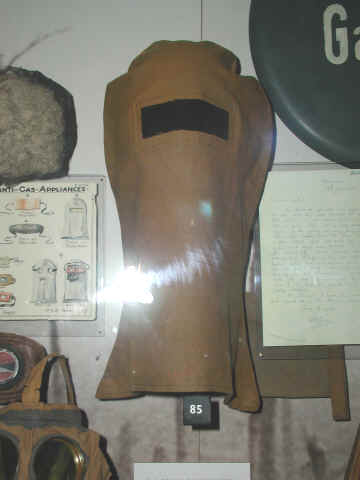
|
Though it was crude, the hypo helmet was a sign to British troops in the trenches that something was being done to help them during a gas attack and that they were not being left out for slaughter. As the months passed and the use of poison gas occurred more frequently, more sophisticated masks were developed and introduced.
Attachments
Last edited:
mw0njm.
A Brummie Dude

Gas Mask,FOR A Baby
World War II, Original
This looks like a deep-sea diving helmet but is in fact a gas mask for babies, dating from World War II. In 1938, the British Government gave everyone, including babies, gas masks to protect them in case the Germans dropped poison gas bombs on Britain.
This gas mask was for children up to two years old. The parents placed their baby inside the mask so that the head was inside the steel helmet and the baby could see through the visor. Then they wrapped the canvas part around the baby's body with the straps fastened under its bottom like a nappy, and its legs dangling free below. The canvas had a rubber coating to stop gas seeping through the material, and the straps were tied securely so that the mask was airtight.
There is an asbestos filter on the side of the mask, and this absorbed poisonous gases. Attached to this is a rubber tube shaped like a concertina with a handle. This was pushed back and forth to pump air into the mask. With the baby inside the mask, an adult could start to use the hand pump.
Health Visitors and Child Welfare Centres gave lessons on how to use the mask. Despite instruction courses, few parents were totally happy with encasing their child in an airtight chamber. In fact there was some question over its safety. During demonstrations there were reports that babies fell asleep and became unnaturally still inside the masks! It is likely that the pump didn't push enough air into the mask and the babies came close to suffocating. Luckily, they were never put to the test in a real situation.
As well as the infant gas mask, there was a gas-proof pram that could be used to protect babies from poisonous gas attacks.
As asbestos ages it breaks down. It is now known that there is a link between asbestos and lung disease. It is very important that all asbestos is professionally removed from old gas masks

Last edited:
Throughout the war, on the grass verge opposite our house, there was a lowish post set into the ground and on the top of it a flat piece of board or metal. This was about a foot or 18" square, was angled sufficiently to let the rain run off it and was a strange, greeny-grey colour. When I was curious enough to enquire about it, I was told that it was to detect a gas attack - if it changed colour, that meant that the Germans had released poison gas in the vicinity.
The danger of a gas attack was never, for me, a real worry - I think that by the time I became conscious of such terrors the likelihood had diminished a bit. But I do now wonder what my parents felt when this little thing appeared within yards of their home in, probably, 1939 - just a reminder of the probable horrors in store against which they would somehow have to protect their children.
I was aware of no particular instruction from my mother as to what to do if it did change colour but I suspect it was simple enough, something like "Grab your mask - quick". I was nervous about a number of things during the war but this wasn't really one of them. Nevertheless I kept a cautious eye on it from time to time: I was conscious of its importance and it helped me understood the reason for that ghastly rubber mask with the Mickey Mouse face which made me feel I was suffocating if I ever had to try it on. And I noticed the same paint in other places, including on the domed top of pillar postboxes.
I never discovered what colour our local detector WOULD have changed into. Thank goodness......
Chris
The danger of a gas attack was never, for me, a real worry - I think that by the time I became conscious of such terrors the likelihood had diminished a bit. But I do now wonder what my parents felt when this little thing appeared within yards of their home in, probably, 1939 - just a reminder of the probable horrors in store against which they would somehow have to protect their children.
I was aware of no particular instruction from my mother as to what to do if it did change colour but I suspect it was simple enough, something like "Grab your mask - quick". I was nervous about a number of things during the war but this wasn't really one of them. Nevertheless I kept a cautious eye on it from time to time: I was conscious of its importance and it helped me understood the reason for that ghastly rubber mask with the Mickey Mouse face which made me feel I was suffocating if I ever had to try it on. And I noticed the same paint in other places, including on the domed top of pillar postboxes.
I never discovered what colour our local detector WOULD have changed into. Thank goodness......
Chris
Interesting that Chris, my dad also talked about those gas detectors and said how they would change colour. I had the impression that there was a real fear that the enemy would use gas as they did in WWI.
I had an ancestor who was gassed in the trenches and survived, but my dad said he was never the same and died a few years after the war ended.
I had an ancestor who was gassed in the trenches and survived, but my dad said he was never the same and died a few years after the war ended.
Yes, real fear indeed, I believe. It never happened, of course, and some say that the reason for this is that there was a mutual deterrent - if one side used it, the other was bound to retaliate. But with madmen running Germany, who could ever have been sure about the possibilty, especially in the last desperate days of the Third Reich?
Chris
Chris
According to the link below, the paint's action only lasted a month . So presumably it had to be reapplied (or not !)
 www.warlordgames.com
www.warlordgames.com
Mustard Gas Detection in ww2 - Warlord Games
You learn something new every day. Just noticed a strange metal flap on a 1/35 scale Matador truck I am making and on researching it low and behold its a gas detection device ! Apparently most British and US vehicles had them on and its basically a special paint often in a circular shape in...
 www.warlordgames.com
www.warlordgames.com
Anyone know what colour would the front of the ambulance have been ?
Viv.
Viv.
Also, an array of headlamps, fog lamps - and even the little illuminated Wolseley badge on the radiator - none of them with any sort of blackout masking. November 1939? Presumably all still to have some post-delivery work carried out on them.
And a Wolverhampton registration - perhaps the location of the coachwork builder?
Chris
And a Wolverhampton registration - perhaps the location of the coachwork builder?
Chris
oldMohawk
gone but not forgotten
One thing they did not tell us in ww2 was that the gas masks were not too effective if the enemy used mustard gas or nerve gas mist which could work though skin contact.
During basic training in the RAF we were shown how to try and survive under gas attacks. A Corporal gave us details of liquid 'nerve gas' which if it got on your skin could kill within minutes unless an automatic spring-loaded needle injector containing atropine was immediately used. He showed us a bottle of the deadly liquid gas and 'accidently' spilt it on someone who nearly died of fright reaching for and using the injector. Of course the 'liquid gas' was water, the injector had a spring but no needle, so was a dud ...
During basic training in the RAF we were shown how to try and survive under gas attacks. A Corporal gave us details of liquid 'nerve gas' which if it got on your skin could kill within minutes unless an automatic spring-loaded needle injector containing atropine was immediately used. He showed us a bottle of the deadly liquid gas and 'accidently' spilt it on someone who nearly died of fright reaching for and using the injector. Of course the 'liquid gas' was water, the injector had a spring but no needle, so was a dud ...
Godber
master brummie
I think there’s various theories as to why Hitler never authorised the use of poison gas to be used against Britain. Obviously, he was well aware that should he do so the favour would most likely be returned tenfold. I believe he had himself been gassed in WWI and knew its effects first hand. Perhaps surprisingly (given the barbarity of the conflict there) it was not used in the East against the Soviet Union either. Small mercies, I suppose.











